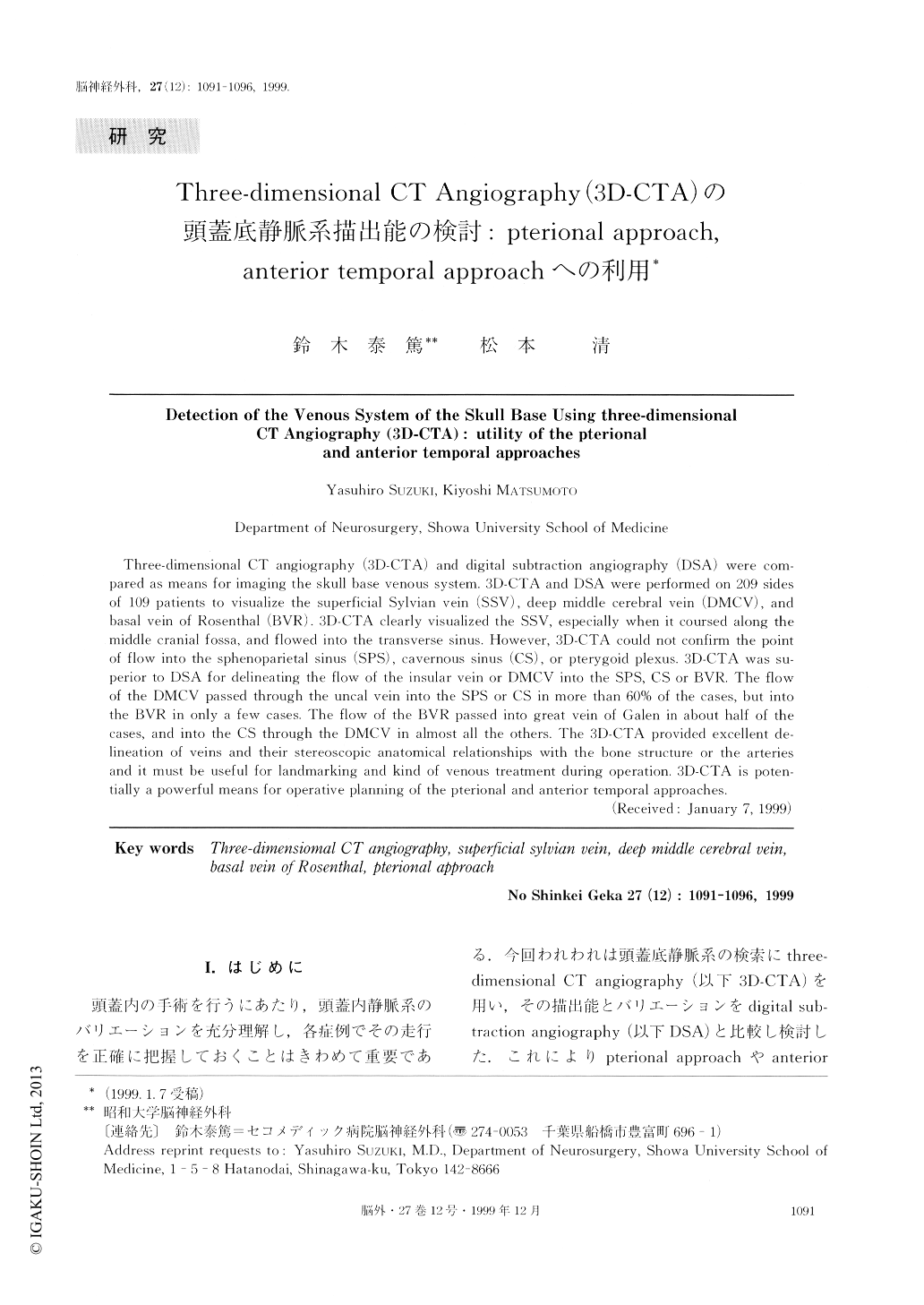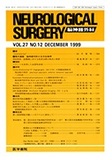Japanese
English
- 有料閲覧
- Abstract 文献概要
- 1ページ目 Look Inside
I.はじめに
頭蓋内の手術を行うにあたり,頭蓋内静脈系のバリエーションを充分理解し,各症例でその走行を正確に把握しておくことはきわめて重要である.今回われわれは頭蓋底静脈系の検索にthree-dimensional CT angiography(以下3D-CTA)を用い,その描出能とバリエーションをdigital sub-traction angiography(以下DSA)と比較し検討した.これによりpterional approachやanteriortemporal approach13)における静脈検索に対し若干の知見を得たので報告する.
Three-dimensional CT angiography (3D-CTA) and digital subtraction angiography (DSA) were com-pared as means for imaging the skull base venous system. 3D-CTA and DSA were performed on 209 sidesof 109 patients to visualize the superficial Sylvian vein (SSV), deep middle cerebral vein (DMCV), andbasal vein of Rosenthal (BVR). 3D-CTA clearly visualized the SSV, especially when it coursed along themiddle cranial fossa, and flowed into the transverse sinus. However, 3D-CTA could not confirm the pointof flow into the sphenoparietal sinus (SPS), cavernous sinus (CS), or pterygoid plexus. 3D-CTA was su-perior to DSA for delineating the flow of the insular vein or DMCV into the SPS, CS or BVR. The flowof the DMCV passed through the uncal vein into the SPS or CS in more than 60% of the cases, but intothe BVR in only a few cases. The flow of the BVR passed into great vein of Galen in about half of thecases, and into the CS through the DMCV in almost all the others. The 3D-CTA provided excellent de-lineation of veins and their stereoscopic anatomical relationships with the bone structure or the arteriesand it must be useful for landmarking and kind of venous treatment during operation. 3D-CTA is poten-tially a powerful means for operative planning of the pterional and anterior temporal approaches.

Copyright © 1999, Igaku-Shoin Ltd. All rights reserved.


